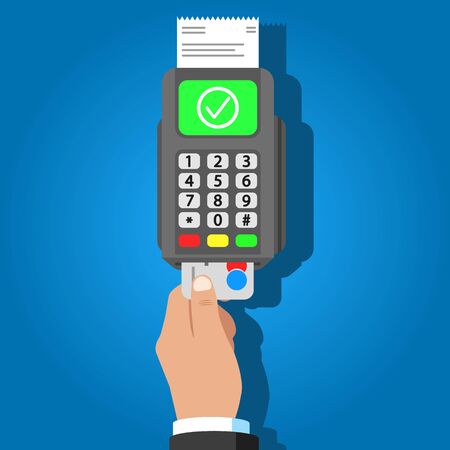Introduction to Digital Payments in India
India is undergoing a remarkable digital revolution, especially in the way people manage their money and make payments. Over the last few years, the adoption of digital payment methods has skyrocketed, fuelled by government initiatives like Digital India and a tech-savvy population eager to embrace change. Today, making payments has become more seamless than ever, thanks to platforms such as UPI (Unified Payments Interface), Paytm, and PhonePe. These platforms have transformed everyday transactions, from paying for groceries at your neighbourhood kirana store to booking train tickets on IRCTC. The convenience, security, and speed offered by digital payments are rapidly replacing traditional cash-based methods and are empowering millions across urban and rural India alike. In this article, we will delve into how these innovations are not only reshaping India’s payment landscape but also offering significant tax benefits and hassle-free solutions for users from all walks of life.
2. Tax Benefits Available for Digital Transactions
With the Indian government pushing for a Digital India, there are several tax incentives and benefits for adopting digital payments over traditional cash transactions. Let’s break down how using digital modes can help you not just keep your finances transparent, but also potentially reduce your tax liabilities.
Government Initiatives Encouraging Digital Payments
The government has introduced multiple schemes to promote cashless transactions. Businesses and individuals opting for digital payments can avail themselves of certain tax benefits under the Income Tax Act and other regulatory measures. Here’s a look at some key initiatives:
| Incentive | Description | Who Benefits? |
|---|---|---|
| Reduced Presumptive Tax Rate (Section 44AD) | If more than 95% of turnover/gross receipts are through digital means, businesses can declare profits at a reduced rate of 6% instead of 8%. | Small businesses & professionals |
| No Banking Cash Transaction Tax (BCTT) | No extra tax on withdrawals/deposits done via digital platforms. | All taxpayers |
| Lower Merchant Discount Rate (MDR) | MDR charges are waived or reduced for small merchants accepting digital payments. | Retailers & shopkeepers |
| GST Input Tax Credit Tracking | Easier tracking and claiming of input tax credit with digital payment trails. | Registered GST businesses |
| Cash Payment Limit (Section 40A(3)) | Payments above ₹10,000 per day made in cash are disallowed as business expenses, but no such restriction on digital payments. | All businesses & professionals |
Simplified Compliance & Transparency
The transparency brought by digital payments simplifies compliance during audits and reduces the risk of penalties. When you pay vendors, employees, or receive payments digitally, every transaction is automatically recorded, making it easier to justify expenses during tax filings and to maintain clean books — a big plus for entrepreneurs and MSMEs looking to scale up without regulatory hassles.
Avoiding Hidden Liabilities with Cashless Modes
Using UPI, net banking, debit/credit cards, or wallets helps avoid scrutiny from the Income Tax Department since all transactions leave an audit trail. By going digital, you not only benefit from government incentives but also protect yourself from hidden liabilities that may arise due to unaccounted cash dealings — giving peace of mind to every business owner across India.

3. Easy Compliance and Documentation
One of the biggest advantages of adopting digital payments in India is the ease of compliance with tax regulations. When you use UPI, net banking, or digital wallets, every transaction is recorded automatically, making it much easier to track your financial activity. This transparency simplifies GST filings, TDS deductions, and income tax documentation for both individuals and businesses. Instead of scrambling to collect paper receipts or bank statements at the end of the financial year, you can easily download comprehensive reports from your payment platforms. Not only does this reduce manual errors, but it also ensures that your records are accurate and audit-ready.
For small business owners and freelancers, digital payments mean less paperwork and more peace of mind. Automated statements help you stay on top of your finances without getting tangled in complex ledgers or manual logs. Moreover, several Indian fintech apps now offer built-in tools that generate GST-compliant invoices or calculate TDS on your behalf. These features make filing returns a breeze and help you avoid penalties due to missed deadlines or incorrect reporting.
Embracing digital payment methods also helps you comply with government incentives aimed at promoting cashless transactions. With every rupee tracked digitally, you’ll be ready to claim deductions and benefits that might otherwise be overlooked in a cash-based system. Ultimately, going digital isn’t just about convenience—it’s about empowering yourself or your business to meet India’s tax requirements with confidence and efficiency.
4. Top Hassle-Free Tips for Secure Digital Payments
In India, digital payments have become an everyday part of life, from UPI transfers to mobile wallets and net banking. However, ensuring your transactions are both hassle-free and secure is essential. Here are some practical, India-specific tips to keep your money safe and your experience smooth:
Use Trusted Apps and Platforms
Always stick to RBI-authorised apps such as Google Pay, PhonePe, Paytm, or BHIM. Download these apps only from the official app stores (Google Play Store or Apple App Store). Avoid sideloading APKs or using third-party app sources.
Set Transaction Limits for Safety
Setting daily or per-transaction limits on your payment apps and bank accounts helps minimise potential losses in case of a security breach. Here’s a quick comparison of how you can set limits on popular platforms:
| Payment Platform | How to Set Limit | Recommended Limit (INR) |
|---|---|---|
| Google Pay | Profile > Payment Methods > Set Limit | ₹5,000–₹10,000/day |
| PhonePe | Settings > Transaction Limits | ₹5,000–₹20,000/day |
| Paytm | Bank Settings > Daily Limit | ₹10,000/day (default) |
| Banks (Net Banking) | User Profile > Fund Transfer Settings | As per user choice |
Avoid Common Cyber Frauds in India
- Never share OTPs or PINs: No bank or payment app will ever ask for these details over call or SMS.
- Beware of phishing links: Always check URLs before entering personal information. Look for “https” and official domains.
- KYC scams: Official KYC updates never ask for sensitive info over WhatsApp or random calls. Visit your branch if needed.
- Check SMS alerts: Enable transaction alerts so you’re instantly aware of any unauthorised activity.
Stay Updated with Latest Security Features
Banks and payment providers regularly upgrade their apps with new security features like biometric logins, facial recognition, and two-factor authentication. Always update your apps and enable these advanced protections for an extra layer of security.
Your Hassle-Free Payment Checklist
- Download only trusted apps from official stores.
- Set daily/transaction limits according to your needs.
- Avoid sharing sensitive information with anyone.
- Keep your device software up-to-date.
- If you suspect fraud, contact your bank immediately via official customer care numbers.
By following these India-specific tips, you can enjoy fast, secure, and trouble-free digital transactions—making the most of the tax benefits while keeping cyber threats at bay.
5. Incorporating Digital Payments Seamlessly in Daily Life
India’s digital revolution has made it easier than ever to weave cashless payments into every part of our daily routines. From grabbing a quick chai at your favourite roadside tapri to shopping on Flipkart or Amazon, UPI and wallet apps like Paytm or PhonePe are now trusted companions for millions of Indians. To truly benefit from the tax advantages and hassle-free convenience these platforms offer, it’s important to adopt digital payments not just for big purchases, but even for small, everyday transactions.
From Chai Stalls to Kirana Stores: Going Cashless is Easy
No matter where you are—be it a bustling city or a small town—most local vendors and kirana shops accept digital payments via QR codes. By choosing to pay digitally, you not only enjoy speedy transactions but also keep a clear record for GST claims or income tax deductions. Even street food vendors and auto-rickshaw drivers increasingly prefer UPI payments, making life easier for both parties.
Online Shopping & Bill Payments: Streamlined and Rewarding
Online stores and utility services have fully embraced digital wallets, net banking, and credit/debit cards. Always check if your payment method offers instant cashback or reward points—it’s an added perk! Plus, keeping all your transactions online simplifies expense tracking during ITR filing season, helping you claim relevant deductions with ease.
Embracing the Digital Ecosystem: Safety Tips
With great convenience comes the need for smart security practices. Never share your UPI PIN, double-check payment amounts before confirming, and use strong passwords for wallet apps. Most importantly, always verify the merchant before scanning any QR code. By following these simple steps, you can enjoy all the benefits of India’s vibrant digital payments ecosystem while staying secure.
The key is consistency—make digital payments your default mode for everything from groceries to mobile recharges. As India moves towards a less-cash society, embracing these habits means smoother transactions, better financial records, and more opportunities to make the most of tax benefits offered by the government.
6. Overcoming Common Challenges in Digital Transactions
Embracing digital payments in India unlocks many tax benefits and simplifies financial management, but everyday challenges can sometimes slow down your cashless journey. Understanding these hurdles—and knowing how to overcome them—will help you make the most of digital transactions while enjoying a hassle-free experience.
Connectivity Issues: Staying Online for Seamless Payments
One of the primary obstacles many Indians face is inconsistent internet connectivity, especially in rural or semi-urban areas. To tackle this, consider using UPI Lite or USSD-based payment options that work even with basic mobile connections. Many banks and wallet services also offer offline transaction features. Always keep your payment apps updated to access the latest solutions for connectivity problems.
Transaction Failures: What to Do When Payments Don’t Go Through
Failed transactions can be frustrating, particularly during peak hours or festival seasons when servers are busy. If your payment fails, check your account balance and transaction status before retrying. Most apps now provide instant notifications and easy refund processes—so don’t panic! Save your transaction reference number and contact customer support if the issue persists. Remember, RBI regulations ensure that failed payments are usually reversed within a few working days.
Support in Regional Languages: Making Digital Payments Inclusive
Language can be a barrier for many first-time users or elderly family members. Fortunately, leading digital payment platforms like Paytm, PhonePe, and Google Pay offer interfaces in multiple Indian languages including Hindi, Tamil, Bengali, Marathi, Telugu, and more. Encourage your loved ones to switch to their preferred language for a smoother experience. Additionally, many helplines now have multilingual support to assist users from every corner of Bharat.
Proactive Tips for a Hassle-Free Experience
- Keep your device charged and updated before starting any important transaction.
- Avoid making payments during known maintenance windows or peak times.
- Always double-check recipient details before confirming transfers.
- Explore government initiatives like DigiLocker or BHIM for secure, reliable transactions.
Your Cashless Journey: Simple & Rewarding
While occasional bumps may arise on your path to digital finance, staying informed and using the right tools will help you enjoy all the tax benefits and convenience digital payments bring in India. By addressing these common challenges proactively, you empower yourself—and those around you—to embrace a smarter, cashless future with confidence.

